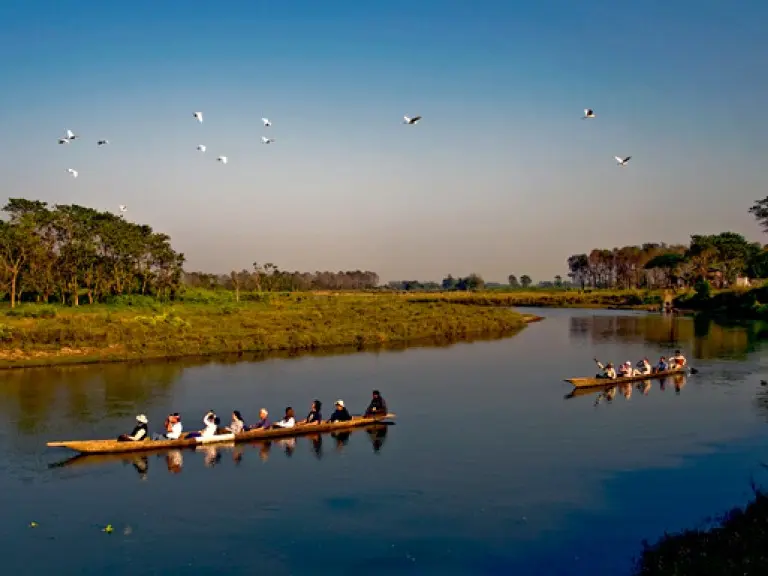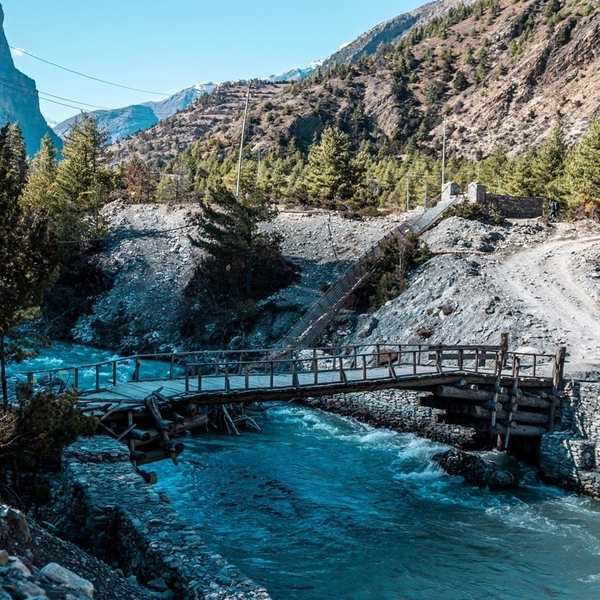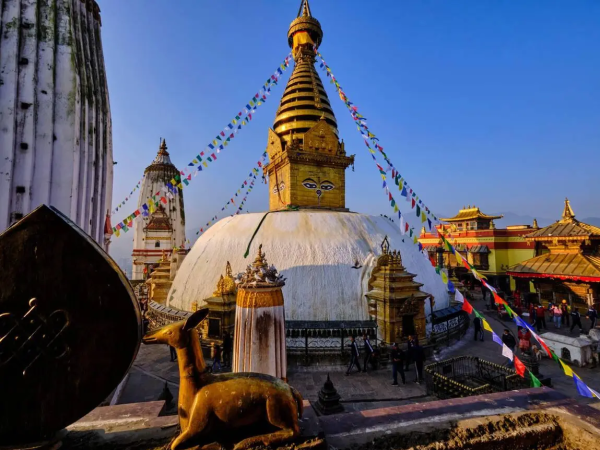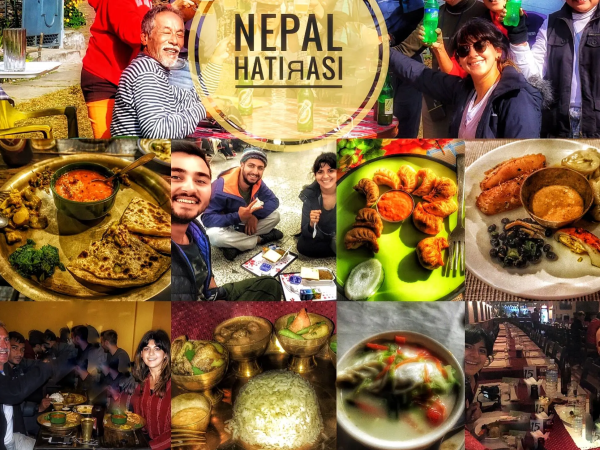Overview of Jungle Safaris in Nepal
A jungle safari in Nepal provides an unparalleled chance to delve into the nation's vibrant biodiversity, away from the typical tourist crowds. Whether you're an adventure enthusiast craving excitement or seeking a peaceful respite after a demanding trek, these safaris blend thrilling encounters with serene immersion for all.Travelers can reside within or near national parks and engage in well-organized safari programs, making them perfect for families, groups, or solo adventurers. Depending on the park, activities range from elephant-back rides (opt for ethical operators), jeep drives, canoe outings, guided jungle walks, birdwatching, and captivating cultural evenings featuring the Tharu community's traditions.Nepal's national parks and reserves offer diverse accommodations, from luxurious jungle resorts with all-inclusive safari packages to basic tented camps ideal for those desiring a genuine rustic experience.
One of the most exhilarating highlights is the jungle walk, where you trace animal trails, spot wildlife in its natural environment, and connect deeply with the forest's vibrant rhythms.With 12 national parks, 1 wildlife reserve, and 6 conservation areas, Nepal is a true paradise for wildlife aficionados. From the iconic Chitwan National Park (a UNESCO World Heritage Site) and the rugged wilderness of Bardiya to the birdwatcher's haven of Koshi Tappu, every safari delivers an incomparable adventure unique to this corner of the world.
Things to Do on a Jungle Safari in Nepal
Nepal's jungle safaris provide an immersive way to explore its rich biodiversity, particularly in Chitwan National Park (a UNESCO World Heritage Site), Bardia National Park, and other reserves like Koshi Tappu. These experiences blend wildlife spotting, adventure, and cultural immersion, often in subtropical forests teeming with species like one-horned rhinos, Bengal tigers, elephants, and over 500 bird species. Activities are typically organized through guided tours, with options for jeep, foot, or water-based exploration. Many tours include all-inclusive packages with accommodation in lodges or tented camps. Below is a comprehensive list of top activities, drawn from popular experiences in 2025.
- Jungle Walk or Nature Walk:Trek on foot through dense forests, grasslands, and animal trails with an experienced guide to spot wildlife like rhinos, tigers, deer, and sloth bears. This is one of the most thrilling ways to observe tracks, sounds, and flora up close, lasting from a few hours to multi-day hikes. It's adventurous but requires caution due to wild animals—guides carry sticks for safety.
- Jeep Safari:Hop into a 4x4 jeep for a fast-paced drive deep into the park, covering larger areas to increase chances of sighting rare animals like tigers and leopards. Tours last 2-4 hours or a full day, often combined with bird watching or visits to breeding centers. Private options allow customization, and it's a comfortable alternative to walking.
- Canoe Ride on the Rapti or Karnali River:Glide peacefully in a traditional dugout canoe along rivers to spot mugger crocodiles, gharials, and birds while enjoying scenic views of the jungle. Early morning trips (1-3 hours) are ideal for wildlife sightings and often lead into a jungle walk. It's a relaxing, low-impact activity.
- Bird Watching:With over 850 bird species in Nepal, join guided tours to observe exotic ones like the great hornbill, Bengal florican, kingfishers, and migratory birds. Best in wetlands or forests, these can be standalone 4-8 hour walks or part of jeep/canoe safaris. Binoculars are provided, making it great for nature enthusiasts.
- Elephant-Back Safari or Ethical Elephant Encounters:Ride on an elephant's back through grasslands to spot rhinos, tigers, and deer from an elevated viewpoint. However, due to growing ethical concerns about animal welfare, many recommend alternatives like observing elephants bathing in rivers or joining non-riding walks. Some tours focus on conservation centers for viewing without interaction.
- Tharu Cultural Program and Village Visit:Experience the indigenous Tharu community's vibrant traditions through evening dances, music, and storytelling shows (about 1 hour). Visit Tharu villages like Harnari or Amaltari to learn about their homes, food, and malaria-resistant lifestyle. Tours often include homestays or cultural museums for deeper immersion.
- Visit Crocodile or Elephant Breeding Centers:Explore centers like the Gharial Crocodile Breeding Center to see crocodiles at various life stages, or the Elephant Breeding Centre for insights into Asiatic elephants (though some note welfare issues with chaining). These educational stops are often included in jeep tours and highlight conservation efforts.
- Watch Sunset or Sunrise Over the Jungle:Relax by the Rapti River or from a riverside spot to witness stunning sunsets or sunrises, with possible Himalayan views on clear days. Combine with drinks at nearby bars or a picnic—it's a serene end to a day of adventure.
- Bicycle Ride or Explore Scenic Lakes:Rent a bike to pedal to spots like Bishazari Lake (20,000 Lake) for picnics, bird watching, and views—about 10 miles from Sauraha. It's a leisurely way to see buffer zones and local scenery outside the main park.
- Tower Night Stay or Overnight in the Jungle:Stay overnight in a wooden tower deep in the park for immersive wildlife viewing, listening to nocturnal sounds. Available in Chitwan or Bardia, it includes guided activities and is ideal for tiger tracking.
Best Time to Visit for Jungle Safaris in Nepal
Nepal's jungle safaris, primarily in national parks like Chitwan, Bardia, and Koshi Tappu, are best experienced during the dry season from October to March. This period offers pleasant weather (cool to mild temperatures around 20-30°C/68-86°F), clear skies, and optimal wildlife visibility as animals congregate near water sources due to drier conditions. Vegetation is less dense post-monsoon, making it easier to spot species like one-horned rhinos, Bengal tigers, elephants, and birds. Crowds are moderate, and activities such as jeep safaris, jungle walks, and canoe rides are more comfortable and accessible without rain interruptions.
Peak Months and Highlights
- October to December (Post-Monsoon/Autumn): Ideal for overall safaris with lush green landscapes, blooming flora, and excellent Himalayan views on clear days. Wildlife sightings are high, and it's great for birdwatching as migratory species arrive. Temperatures are comfortable (15-25°C/59-77°F), and this is prime time for Chitwan and Bardia, with lower humidity.
- January to March (Winter/Early Spring): Best for tiger and rhino spotting, especially in Bardia, as grass is short and animals are more active near rivers. Cooler mornings (10-20°C/50-68°F) make walks enjoyable, but pack layers for evenings. This is also peak for birdwatching in Koshi Tappu, with over 400 species visible.
- April to May (Pre-Monsoon/Spring): Hotter (up to 35-43°C/95-109°F) but excellent for tiger sightings in Chitwan and Bardia as animals gather at shrinking waterholes. Grass remains short for better visibility, though dust and heat can make activities challenging—opt for early morning or evening safaris. Fewer crowds, but prepare for potential pre-monsoon showers.
- June to September (Monsoon): Generally not recommended due to heavy rainfall (up to 500mm/month), flooding, leeches, and muddy trails that limit access—many roads and activities in parks like Chitwan may close. Wildlife is harder to spot amid dense foliage, though it's a unique time for birdwatching and lush scenery if you're adventurous. Avoid if possible, as safety risks increase.




